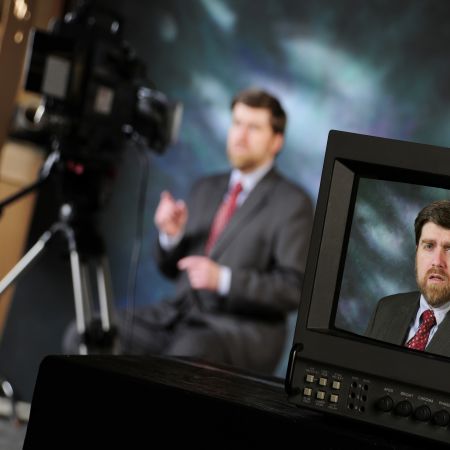Why Legal Videography is Vital for Accurate Legal Paperwork
Why Legal Videography is Vital for Accurate Legal Paperwork
Blog Article
Looking Into the Mechanisms of Lawful Videography: Introduction Its Procedure in Safeguarding Genuine Aesthetic Statement for Judicial Procedures
In the realm of judicial process, the function of legal videography stands as a foundation in maintaining and providing aesthetic proof. As technology continues to breakthrough, the devices behind legal videography have actually come to be significantly elaborate, providing an important layer of credibility to statements caught on video clip.
Historical Evolution of Lawful Videography
Examining the historical development of lawful videography discloses a significant improvement in the capturing and presentation of aesthetic proof within the lawful landscape. In the past, lawful procedures greatly relied upon composed transcripts and pictures to record occasions and offer evidence. With the arrival of video innovation, the lawful industry witnessed a standard change in how aesthetic testimony was caught and presented.
The development of lawful videography can be mapped back to the late 20th century when innovations in video clip recording devices made it much more obtainable for usage in court rooms. This technological innovation not just enhanced the accuracy and dependability of visual proof yet also changed the way cases existed to courts and judges (Legal Videography). Lawyers began to identify the persuasive power of video recordings in communicating emotions, nuances, and non-verbal cues that composed transcripts or photos alone might not record successfully

Modern Technology Advancements in Video Paperwork
What crucial technological innovations have reinvented video paperwork in the legal field? The lawful area has seen considerable innovations in video clip documents modern technology that have boosted the authenticity and dependability of aesthetic proof in judicial process.
Furthermore, developments in video file encryption and watermarking modern technologies have actually reinforced the safety and tamper-proof nature of video clip proof, safeguarding it against unauthorized alterations or meddling. Additionally, the introduction of cloud storage solutions and remote gain access to abilities has streamlined the storage space, retrieval, and sharing of video clip proof, helping with seamless cooperation amongst legal specialists and making certain effective accessibility to crucial aesthetic testaments when needed. These technical improvements in video clip documents have actually definitely reinvented the legal area, boosting the precision, credibility, and admissibility of visual evidence in judicial process.
Function of Lawful Videographers in Courtroom Settings
The advancement of video documents technology in the legal field has actually demanded a critical function for legal videographers in court room setups, making certain the integrity and reliability of visual testaments provided during judicial process. Lawful videographers play an essential role in catching and preserving precise aesthetic proof that can be critical in court instances. Their responsibility encompasses establishing up devices, recording process, and generating high-quality video clips that properly reflect the events in the court room.
In court setups, lawful videographers must comply with rigorous standards and requirements to maintain the credibility of the visual record. They must have a keen eye for information and an extensive understanding of lawful procedures to make certain that the video footage they capture is a real representation of the occasions that transpired. Furthermore, legal videographers typically work very closely with legal teams to ensure that the video clip proof straightens with the case's needs and can be successfully presented in court to sustain the lawful debates being made. Generally, the role of legal videographers in court setups is indispensable in promoting the concepts of justice and ensuring the openness of lawful process.

Ensuring Admissibility and Integrity of Video Proof
To maintain the trustworthiness of visual proof offered in More about the author legal procedures, making sure the admissibility and integrity of video evidence is a critical obligation for click to find out more lawful videographers. Admissibility refers to the approval of evidence by the court, and for video evidence to be permissible, it has to fulfill specific criteria. Legal videographers play a critical duty in guaranteeing that the videos they catch comply with the policies of evidence, such as importance, integrity, and credibility.
Integrity of video proof entails keeping the creativity and accuracy of the footage from the time it is taped till it exists in court. This consists of securely storing the video clip data, recording the chain of custodianship, and preventing any type of meddling or alterations. Lawful videographers should comply with rigorous methods to assure the integrity of the video evidence and protect against any type of difficulties to its credibility.
Future Trends in Legal Videography
Offered the enhancing reliance on technology in lawful process, legal videographers are positioned to welcome ingenious innovations shaping the future of aesthetic statement capture and presentation. One of the popular trends imminent is the combination of online reality (VR) and boosted fact (AR) technologies into legal videography. These modern technologies have the prospective to revolutionize how visual evidence is provided in court rooms, enabling discretionary to submerse themselves in the scene of the criminal activity or occurrence.
Furthermore, making use of expert system (AI) algorithms for video evaluation is expected to simplify the procedure of assessing and evaluating huge amounts of video footage. AI can help in recognizing key minutes, abnormalities, and patterns her response within videos, enhancing the efficiency of lawful examinations.

Conclusion
Finally, lawful videography has actually played a vital duty in offering genuine visual proof for judicial procedures. Via technological improvements and the competence of legal videographers, the integrity and admissibility of video proof are ensured in court settings. As legal videography continues to advance, it will be necessary to maintain criteria that keep the accuracy and dependability of aesthetic statement for the future of lawful procedures.
Analyzing the historical progression of lawful videography discloses a substantial transformation in the catching and discussion of aesthetic evidence within the lawful landscape.The development of video documents innovation in the legal area has required an important function for legal videographers in court settings, guaranteeing the honesty and dependability of visual statements offered throughout judicial proceedings. Furthermore, lawful videographers usually work closely with legal teams to make sure that the video proof straightens with the instance's demands and can be properly provided in court to sustain the legal debates being made.To maintain the integrity of aesthetic proof offered in lawful process, making certain the admissibility and stability of video clip proof is an important duty for lawful videographers. As legal videography continues to progress, it will be vital to copyright requirements that preserve the precision and integrity of aesthetic testament for the future of legal procedures.
Report this page